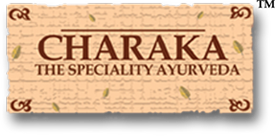 Raktamokshana, or bloodletting, it is an important part of the clinical therapeutic use of Panchakarma in the management of several important disease conditions.
Raktamokshana, or bloodletting, it is an important part of the clinical therapeutic use of Panchakarma in the management of several important disease conditions.
Raktamokshana is an effective blood purification therapy, in which carefully controlled removal of small quantities of impure blood is conducted to neutralise accumulated toxins.
when excess toxicity of rakta and pitta has occurred so much so that it cannot be cured by herbs or any other procedure, raktamokshan comes to rescue.
Although Raktamokshana is the most limited of the five major procedures, it provides a rapid and sometimes dramatic reduction of symptoms in certain acute disorders where there is no time for the various phases of Panchakarma like Purvakarma (Preparation for Panchakarma), etc. Raktamokshana can be helpful.
In Ayurveda there are two types of raktamokshana:
- Shastra visravana. The use of metallic instruments, which is divided into two categories:
- Siravyadhana, which we know today as venipuncture, using a syringe to remove blood from a vein.
- Pracchana: letting the blood exude out through several superficial incisions made in the skin with a metallic blade or scalpel.
A sub-type of the latter is Alabu pracchana. This is the use of a bottle gourd, or other conical-shaped vegetables, to create a vacuum over the incisions. It is similar to and the forerunner of Chinese and European wet cupping which appeared later.
- Anushastra visravana. Methods which do not use metallic instruments. This is divided into 2 categories:
- Jalaukavacharana: applying leeches to a particular area. This and alabu pracchana are currently the most common methods of raktamokshana.
- Shrungavacharana, which mean using a cow’s horns. This is mainly used for treating Pitta/Rakta conditions accompanied by a high degree of vata vitiation.
Diseases occurring due to vitiation of blood and pitta shall be dealt with bloodletting.
Raktamokshana is effective in conditions like allergies, tonsillitis, sciatica, gout, acne, migraine, eczema, psoriasis, Lyme disease, filariasis, glaucoma, liver & spleen disorders, osteoarthritis, rheumatoid arthritis, frozen shoulder, rheumatic disease, diabetic wounds, non-healing ulcers, varicose veins, elephantiasis, abscesses, tumours, erysipelas, sexually transmitted diseases, breast diseases, hypertension, thrombosis (blood clot), and alopecia, psychological problems, vishamjwar (fever), epilepsy etc.

